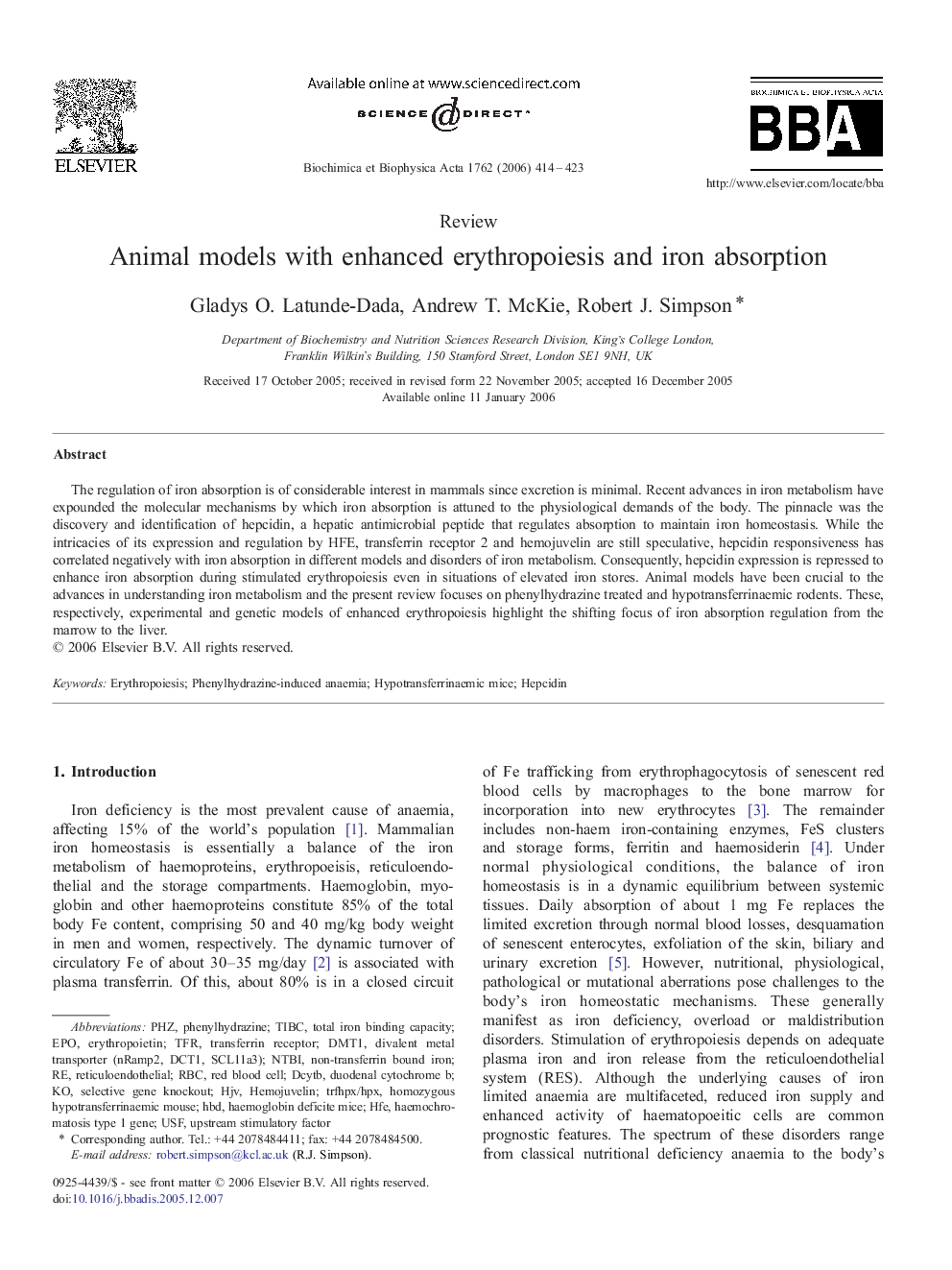| Article ID | Journal | Published Year | Pages | File Type |
|---|---|---|---|---|
| 1906030 | Biochimica et Biophysica Acta (BBA) - Molecular Basis of Disease | 2006 | 10 Pages |
The regulation of iron absorption is of considerable interest in mammals since excretion is minimal. Recent advances in iron metabolism have expounded the molecular mechanisms by which iron absorption is attuned to the physiological demands of the body. The pinnacle was the discovery and identification of hepcidin, a hepatic antimicrobial peptide that regulates absorption to maintain iron homeostasis. While the intricacies of its expression and regulation by HFE, transferrin receptor 2 and hemojuvelin are still speculative, hepcidin responsiveness has correlated negatively with iron absorption in different models and disorders of iron metabolism. Consequently, hepcidin expression is repressed to enhance iron absorption during stimulated erythropoiesis even in situations of elevated iron stores. Animal models have been crucial to the advances in understanding iron metabolism and the present review focuses on phenylhydrazine treated and hypotransferrinaemic rodents. These, respectively, experimental and genetic models of enhanced erythropoiesis highlight the shifting focus of iron absorption regulation from the marrow to the liver.
